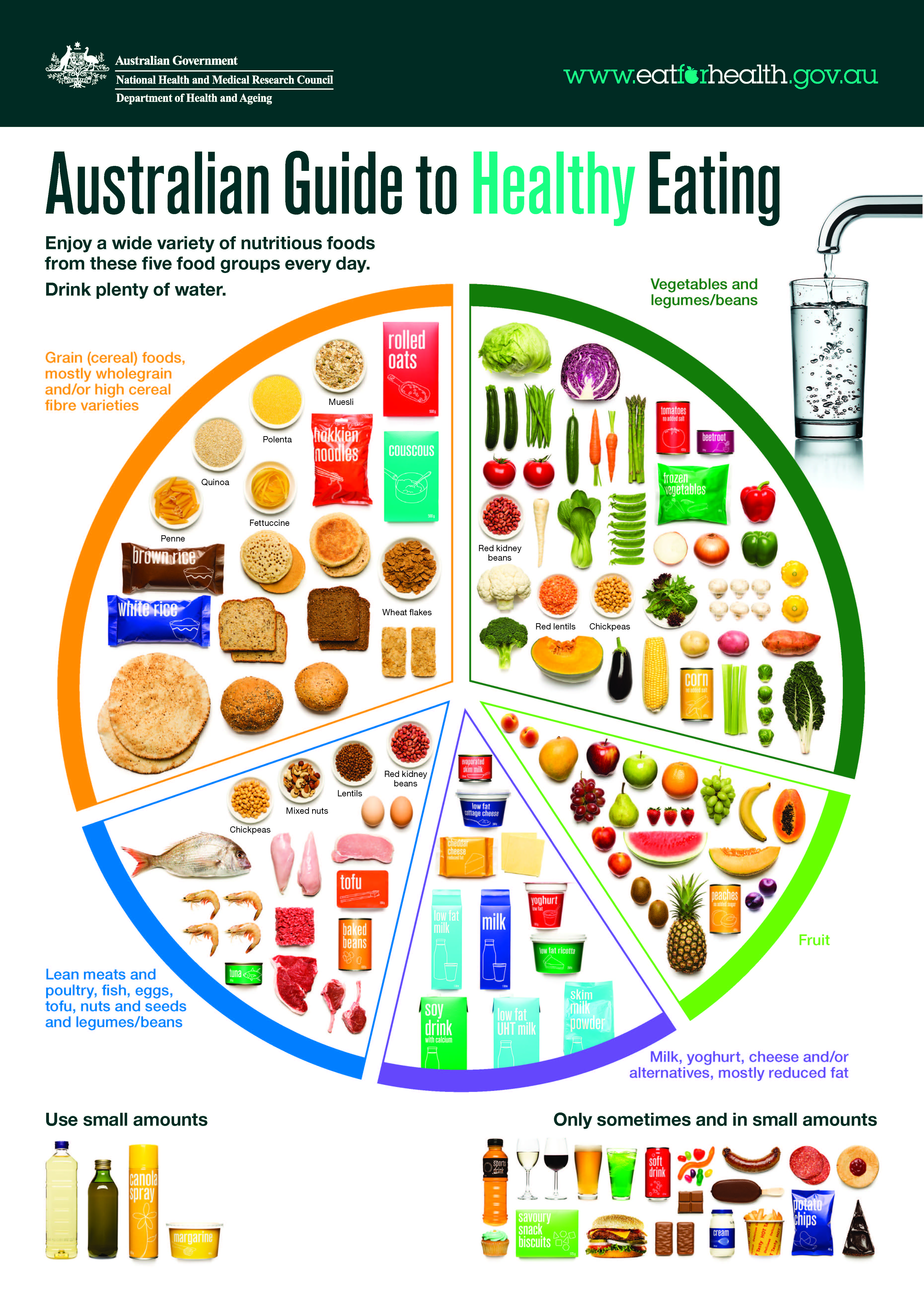Department of Health
A gateway to the strategies, policies, programs and services delivered by the Department of Health.
A Tasmanian Government and Community Partnership
 The Infant Feeding Guidelines and the Australian Dietary Guidelines provide up-to-date advice about the amount and kinds of food we need to eat for health and wellbeing. They are based on the latest scientific evidence. The Australian Guide to Healthy Eating (pictured right), shows the proportion of the five food groups to aim for every day, and also shows which foods to eat only sometimes or in small amounts.
The Infant Feeding Guidelines and the Australian Dietary Guidelines provide up-to-date advice about the amount and kinds of food we need to eat for health and wellbeing. They are based on the latest scientific evidence. The Australian Guide to Healthy Eating (pictured right), shows the proportion of the five food groups to aim for every day, and also shows which foods to eat only sometimes or in small amounts.
There are many health benefits of eating well, including:
Very few Tasmanians eat in the way shown by the Australian Guide to Health Eating:
Further, only 4 out of 10 Tasmanian babies are exclusively breastfed at 4 months.6
image source: National Health and Medical Research Council
1Tasmanian Population Health Survey 2016
2 Australian Bureau of Statistics (2015). National Health Survey 2014 - 2015.
3Tasmanian Population Health Survey 2016
4 Australian Bureau of Statistics (2015). National Health Survey 2014 - 2015.
5 Australian Health Survey: Nutrition First Results – Food and Nutrients, 2011-12 – Australia Table 9.1
Generally, to improve what we eat we need to7:
Eat more: | Eat less: |
|---|---|
|
|
Drink more: | Drink less: |
|---|---|
|
|
For personalised advice on how to eat well, talk to your GP, an Accredited Practising Dietitian or your local community health service centre.
What’s available to help me eat well?
Below we’ve gathered information from credible organisations to help you, your family and community eat well.
7 https://www.eatforhealth.gov.au/guidelines/about-australian-dietary-guidelines
shows the proportion of the five food groups recommended to eat each day
Visit linkadvice on how to increase fruit and vegetable intake, how to eat in season, recipes and healthy eating tips
Visit linkinformation about food regulations and standards
Visit linklearn what they mean to help make choices about the food you buy
Visit linkadvice from the Australian Breastfeeding Association
Visit linka collection of key information about eating and physical activity for raising healthy Tasmanian kids
Visit linka parent’s guide to eating for under 5s, includes information about breastfeeding and infant formula
Visit linka program that trains and supports volunteer peer educators, to promote eating well and being active for families and communities
Visit linkadvice on how to help children enjoy more 'everyday' foods and less 'sometimes' foods
Visit linkinformation and ideas to encourage children to eat more fruit and vegetables
Visit linkinformation and ideas to make water the main drink and to limit sweet drinks
Visit linka program to bring older adults together for a nutritious meal and to make new friends
Visit linkshows the proportion of the five food groups recommended to eat each day
Visit linkincludes information on drinks, infant feeding, lunchboxes and food safety in a variety of languages
Visit linkinformation and resources for healthy workplace catering
Visit linka guide to making vending machine choices healthier
Visit linkonline tools and resources for health, safety and wellbeing, including how to develop and implement a workplace health and wellbeing program
Visit linkresources to help Tasmanian secondary schools make healthy choices easy, positive and normal for students
Visit linkquestions and answers to some of the more complex questions about healthy eating asked at school
Visit linksupport school communities to promote and provide a school food service that is nutritious, affordable, safe and where possible, locally sourced and prepared by the school.
Visit linkFor other health and wellbeing resources, visit the Health and community workers page.
If you’ve got feedback or suggestions about the resources in this section, please contact us or complete the feedback form.